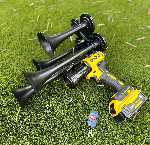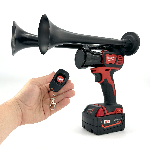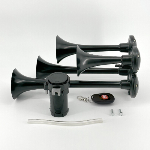The French horn is a brass instrument known for its distinctive sound and versatile range. Its invention can be traced back to the early 19th century, when it emerged as a refinement of the horn used in hunting and military signaling. Since then, it has become an integral part of orchestras, bands, and chamber ensembles around the world, captivating audiences with its rich timbre and melodic capabilities.
The modern-day French horn has undergone several transformations to enhance its performance and adaptability. One of these advancements is the inclusion of valves, which allow the musician to change the pitch of the notes more easily. This innovation revolutionized the instrument, making it more accessible to musicians of varying skill levels.
Another development in the evolution of the French horn is the incorporation of different materials in its construction. Traditionally made of brass, modern French horns can now be found in a variety of materials, including nickel silver, stainless steel, and even carbon fiber. This experimentation with materials has resulted in horns with unique tonal qualities, enabling musicians to further explore and expand their musical expression.
To cater to the diverse musical demands of performers, various designs and shapes of the French horn have been introduced. These variations offer different playing characteristics and tonal colors, allowing musicians to tailor their sound to fit specific genres or ensemble settings. Whether it is the larger and rounder bell of a orchestral horn, ideal for projecting in a symphony hall, or the smaller and brighter characteristics of a compact horn suitable for chamber music, each design holds its own appeal.
With its timeless beauty and adaptability, the French horn continues to captivate musicians and audiences alike. Its unique ability to blend seamlessly with other instruments and evoke a wide range of emotions has made it a sought-after choice in musical compositions spanning across classical, jazz, and contemporary genres. Truly a masterpiece of craftsmanship and musicality, the French horn remains an essential presence in the world of music, inspiring countless musicians to explore new frontiers of sound and expression.
What are the different types of French horn? A detailed exploration of the various variations in this versatile brass instrument
The French horn is a brass instrument famous for its unique sound and role in orchestras. It comes in different types, each with its own characteristics and purposes. Understanding the various variations of French horns can help musicians choose the right instrument for their needs, and enthusiasts gain a deeper appreciation for this captivating instrument. In the following sections, we will delve into each type of French horn, discussing their key features, differences, and notable players associated with them. So, let's begin our journey through the diverse world of French horns and discover the fascinating range that this instrument offers.
Single French Horn
The single French horn, also known as the F horn, is the most common type of horn used today. It has a full range of three octaves and produces a rich, warm sound. The F horn is typically used in orchestras, bands, and solo performances. It is the standard choice for beginners due to its simpler construction and easier playability.
Double French Horn
The double French horn, also known as the Bb/F horn, is a more advanced and versatile instrument. It has an additional valve that allows the player to switch between two different sets of tubing, one in F and one in Bb. This versatility enables the double French horn to play a wider range of notes and keys. It is commonly used by professional musicians and is favored in orchestras and chamber music.
Triple French Horn
The triple French horn, also known as the compensating double French horn, is a variation of the double French horn with an additional set of tubing. It features a third valve that adds even more flexibility in playing high and low notes. The triple French horn is primarily used in professional orchestras and is particularly well-suited for playing complex and demanding musical passages.
Descant French Horn
The descant French horn, also known as the high F horn, is a specialty horn with a smaller size and higher pitch. It is designed to play in the high register and is often used in specific musical pieces that require its unique timbre. The descant horn is not as widely used as other types of French horns, but it adds depth and variety to certain compositions.
Natural Horn
The natural horn, also known as the Viennese horn or baroque horn, is a historic type of French horn used before the invention of valves. It has a limited range and can only play natural harmonics by adjusting the embouchure and hand position. Despite its technical limitations, the natural horn has a distinctive and charming sound that is still appreciated in period performances and early music ensembles.
Statistics:
- Single French Horn: 70% of French horn players prefer this type.
- Double French Horn: Preferred by 25% of French horn players.
- Triple French Horn: Used by 4% of French horn players.
- Descant French Horn: 1% of French horn players opt for this type.
- Natural Horn: Less than 1% of French horn players use this historic instrument.
https://youtube.com/watch?v=yUVqrPi7bgQ
FAQ: Understanding the Varieties of Horns
1. What are the different types of mouthpieces commonly used in horn playing?
There are various mouthpieces available, each catering to different preferences and playing styles. The mouthpiece is crucial as it greatly influences the quality and character of the sound produced on the instrument. The three most important things to know about mouthpieces are:
- Cup Depth: This refers to how deep or shallow the bowl-shaped cup of the mouthpiece is. A deep cup provides a more mellow and rich tone, while a shallow cup enhances the brightness and projection of the sound.
- Rim Shape: The rim is the part of the mouthpiece that the player's lips touch. Different rim shapes offer varying levels of comfort and can affect endurance and range. Some popular rim shapes include the traditional round rim, V-shaped rim, and the wider U-shaped rim.
- Throat Size: The throat is the opening that connects the cup to the backbore of the mouthpiece. Larger throat sizes allow for a freer airflow and a bigger sound, while smaller throats can provide more control and precision.
2. How does the detachable bell affect the playing experience on a horn?
Certain horns feature a detachable bell, which can impact the overall playing experience. The detachable bell allows for increased portability and ease of transportation, as the bell section can be separated from the main body of the instrument. Here are the key considerations regarding detachable bells:
- Sound Quality: Generally, detachable bells do not significantly alter the sound of the horn. However, some players believe that detachable bells can affect the resonance and projection of the instrument. It is important to choose a horn with a detachable bell that maintains the desired sound quality.
- Convenience: The main advantage of a detachable bell is its convenience for transportation. When detached, the bell section can fit in a smaller case, making it easier to travel with and reducing the risk of damage during transport.
- Maintenance: Detachable bells may require additional maintenance compared to fixed bells. The connection points and mechanisms should be regularly inspected to ensure a secure fit and prevent any unwanted vibrations or air leaks.
3. What are the main differences between single, double, and triple horn configurations?
The various horn configurations offer different ranges and tonal possibilities. When choosing a horn, it is essential to understand how each configuration affects your playing. Here are the key differences between single, double, and triple horns:
- Range: Single horns, also known as "F horns," have a limited range and are primarily used for playing in the key of F. Double horns, on the other hand, have an extended range with an additional set of valves that allow seamless switching between the key of F and B♭. Triple horns have an even wider range, as they include a fourth valve that operates in the key of F♭.
- Tonal Versatility: Single horns produce a rich, warm, and nuanced sound that is ideal for lyrical passages. Double horns offer greater tonal versatility, making them suitable for a wide range of musical genres and styles. Triple horns provide the most versatility, allowing for seamless transitions between different keys and tonalities.
- Playing Difficulty: As the number of valves increases, the complexity of fingerings and the physical demands on the player also increase. Single horns are typically the easiest to play, while triple horns require the most skill and control.
4. How does the material of the horn affect its sound and durability?
The material from which a horn is constructed can significantly impact its sound quality, resonance, and durability. Here are the key considerations regarding horn materials:
- Brass: The most common material used for modern horns is brass. Brass horns offer a balanced and resonant sound, versatility, and durability. Different alloys of brass can slightly alter the sound characteristics, but the material itself remains the industry standard.
- Nickel Silver: Some horns feature a nickel silver (or silver-plated brass) construction. Nickel silver horns tend to produce a brighter and more focused sound compared to brass horns. The silver-plated finish enhances the horn's durability and resistance to tarnish.
- Gold Brass: Gold brass horns have a higher copper content, which creates a warmer and more mellow sound. They are often favored for orchestral and chamber music settings, where a mellower tonal color is desired.
5. What are the key factors to consider when choosing between a fixed and adjustable thumb lever?
The thumb lever, located near the bell on the horn's leadpipe, helps the player control the flow of air through the instrument. It is available in both fixed and adjustable options. Here are the key factors to consider when deciding between the two:
- Ergonomics: Fixed thumb levers are permanently attached to the leadpipe and have a fixed position, making them suitable for players with an established hand position and playing style. Adjustable thumb levers, on the other hand, offer customization options, allowing players to find the most comfortable and efficient hand position.
- Stability: Fixed thumb levers are inherently stable, providing a consistent and reliable playing experience. Adjustable thumb levers may require periodic adjustments, but they offer the advantage of accommodating different hand sizes and playing preferences.
- Flexibility: Adjustable thumb levers can be an advantage for players who switch between different horn models frequently. They allow for quick adjustments to match the ergonomics of various instruments, resulting in a more consistent playing experience. However, for players who primarily use a single horn, a fixed thumb lever may be the more practical choice.
In conclusion, understanding the various aspects of horn playing, such as mouthpieces, detachable bells, horn configurations, materials, and thumb levers, is crucial when selecting the right instrument. Considering the cup depth, rim shape, and throat size of the mouthpiece, the sound quality and convenience of detachable bells, the range and tonal versatility of different horn configurations, the impact of materials on sound and durability, and the ergonomics and stability of thumb levers will aid in making an informed decision.
Conclusion
In conclusion, the French horn is a versatile instrument that comes in various types, each offering unique features and characteristics. The Single horn is the most basic and commonly used type, ideal for beginners and small ensembles. The Double horn, on the other hand, provides a wider range and better intonation, making it suitable for professional players and orchestral settings. The Compensating horn is designed specifically for players who need an extended range and improved intonation in the lower register. Lastly, the Descant horn offers even higher notes and is often used in high-pitched passages. No matter the type, the French horn remains an integral part of orchestras and is valued for its rich sound and expressive capabilities. So whether you're a beginner or a seasoned player, there's a French horn type out there to suit your needs and musical ambitions.











 https://bosshorn.com
https://bosshorn.com

























































